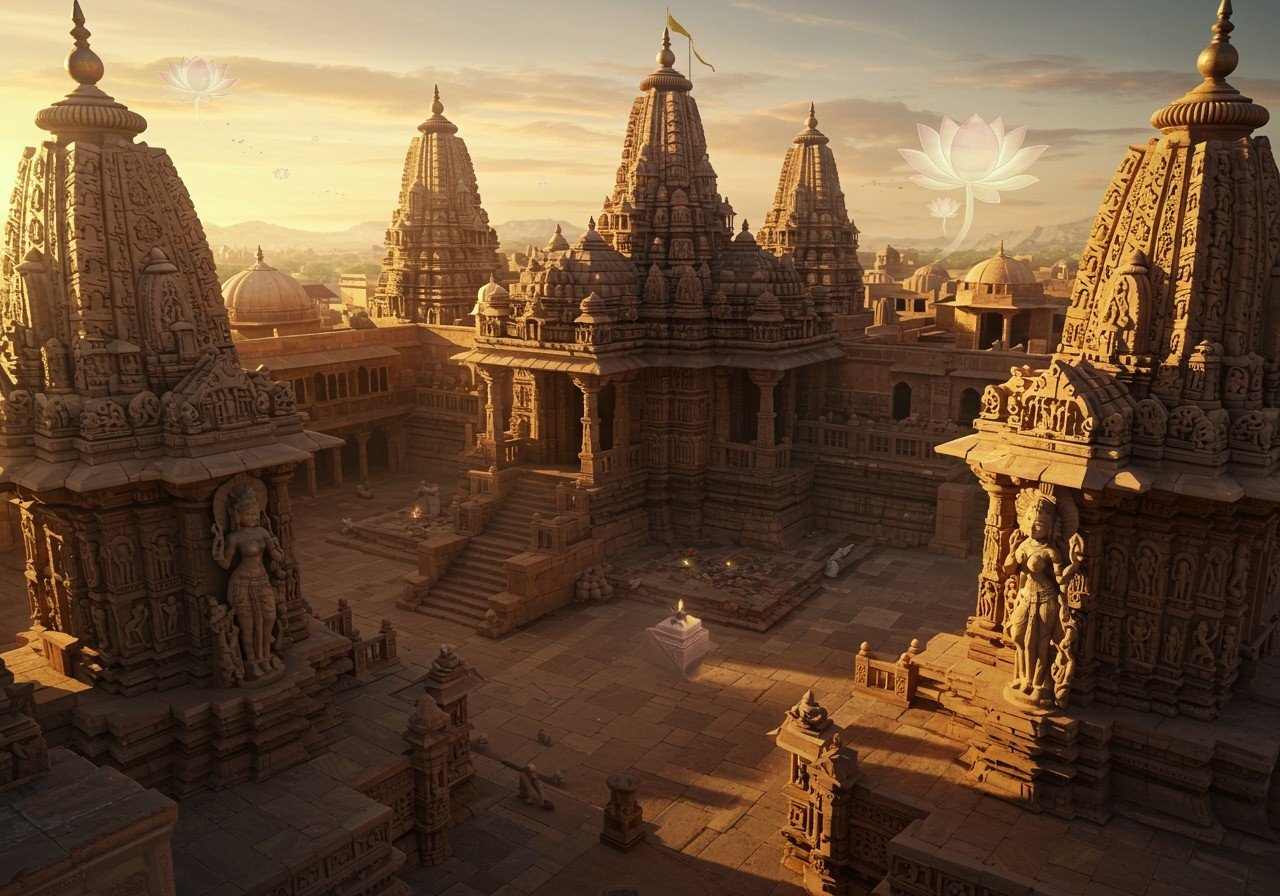
The Maitraka dynasty, reigning from the 5th to 8th centuries CE, significantly impacted Western India’s cultural and architectural landscape, especially in present-day Gujarat and Madhya Pradesh. They were patrons of art and architecture, contributing to the construction of Buddhist and Brahmanical temples. Notable examples include the Shiva temple in Vatapadra, the Bhartishwara temple, and the Goddess Kotammahika temple in Trisangamaka. This era saw numerous architectural innovations and artistic expressions that continue to influence later styles. Let’s explore the Maitrakas’ remarkable contributions, examining the architectural wonders of their capital Vallabhi, their unique sculptures, and the lasting legacy of their art and architecture. The dynasty supported the flourishing of Buddhism, Jainism, and Brahmanism, and their architectural legacy includes some of the most beautiful structural temples of the Late Gupta-Maitraka style.
Architectural Marvels of Vallabhi
Vallabhi, the Maitraka capital, was renowned for its architectural splendor. Grand structures, built with advanced techniques and materials like stone and wood, featured intricate carvings and elaborate pillars, showcasing the unique aspects of Maitraka architecture. Religious sites, including temples and monasteries, played a vital role in Vallabhi, with the city’s urban design reflecting the dynasty’s development approach. Monuments like Buddhist stupas highlight the architectural and religious significance of the era.
Badami Cave Temples provide a fascinating comparison to the rock-cut architecture prevalent in other regions during this time.
Trade and commerce significantly influenced Vallabhi’s architecture, showing influences from neighboring areas. This blend of local and external elements created a distinctive architectural style.
Sculptures and Art of the Maitraka Dynasty
The Maitraka period witnessed remarkable advancements in sculpture and other art forms. Maitraka sculptures, known for their distinctive style, including detailed facial expressions and body postures, often depict religious themes, reflecting the dynasty’s spiritual beliefs. Prominent examples include icons of Vishnu and Shiva. Artisans employed techniques like carving and casting to create intricate works of art, primarily using stone and metal. Patronage played a vital role in the development of Maitraka art, which also shows clear influences from earlier dynasties and cultures.
Poojn.in offers a wide selection of brass and marble statues of deities like Vishnu, Shiva, Lakshmi, and Ganesh, allowing you to bring the spiritual essence of the Maitraka period into your home. Explore our collection of Radha Krishna statues, Lakshmi Ganesh statues, and brass Maa Tara murtis to discover the artistry and devotion embodied in these sacred figures.
Influence on Later Art Styles
The Maitraka dynasty’s artistic and architectural innovations had a lasting impact. Architectural styles evolved, incorporating Maitraka techniques and designs. Maitraka motifs and themes persisted in later sculptures and artwork. Regional art forms across Gujarat and beyond integrated Maitraka elements. The dynasty’s contributions significantly influenced the development of temple architecture in India, with later dynasties like the Solankis adopting Maitraka styles. The enduring legacy of Maitraka art is visible in current practices and preservation efforts, as highlighted by scholarly research.
Learn more about the architectural influences of this period by exploring articles on Kandariya Mahadeva Temple and Sas-Bahu Temples.
FAQs on Maitraka Art and Architecture
What were the key architectural features of Vallabhi? Vallabhi showcased grand temples, palaces, and Buddhist stupas, exemplifying the dynasty’s architectural prowess.
What characterizes Maitraka sculptures? Maitraka sculptures, often depicting deities, animals, and mythological scenes, are known for their detailed carvings and intricate designs, primarily crafted from stone.
How did the Maitrakas influence later art? The Maitraka dynasty’s innovations set precedents for later periods, particularly in temple construction and sculpture techniques, influencing subsequent Indian architectural developments.
What materials did Maitraka architecture utilize? Stone, brick, and wood were the primary materials, chosen for durability and carving potential.
Did the Maitrakas produce paintings? Although sculpture dominated, some discovered frescoes and murals depict religious and mythological themes.
What religious influences are evident? Maitraka art displays strong Hindu, Jain, and Buddhist influences, reflected in temples and sculptures featuring deities and symbols from these religions.
What distinguishes Maitraka art from other Indian styles? Maitraka art stands out due to its detailed carvings and unique architectural designs, emphasizing intricacy and religious symbolism more than other styles.
What are the defining features of Maitraka temple architecture? Maitraka temples are recognized for complex layouts, multiple shrines, detailed carvings, large domes, and ornate entrances.
How Poojn.in Connects You to the Maitraka Period
At Poojn.in, we recognize the profound connection between art, architecture, and spirituality from the Maitraka period. Our offerings help you maintain this sacred link:
- Brass and copper arti thalis: Featuring intricate designs inspired by Maitraka art motifs, these thalis enhance your puja rituals. They are crafted with precision and attention to detail, echoing the artistic excellence of the era.
- Traditional puja items: Crafted with authentic materials and techniques, our puja items reflect the reverence and spiritual significance of the Maitraka period. We source high-quality materials to ensure the authenticity and durability of these sacred objects.
- Handcrafted bells and ghantis: These items, reflecting architectural elements of Maitraka temples, bring the temple’s sacred sounds into your home. Each bell and ghanti is carefully crafted to produce resonant and spiritually uplifting sounds.
- Curated puja sets: These sets include items commonly used in temples of that era, providing a complete and authentic puja experience. They are designed to facilitate a deeper connection with the spiritual practices of the Maitraka period.
We ensure all items adhere to traditional specifications while meeting modern quality standards. Each product includes detailed information about its significance and proper usage. Our collection helps preserve and continue the rich artistic and spiritual legacy of the Maitraka period.
Visit Poojn.in to explore our complete range of traditional puja items. We offer secure packaging, reliable India-wide delivery, and expert guidance for your spiritual needs.


